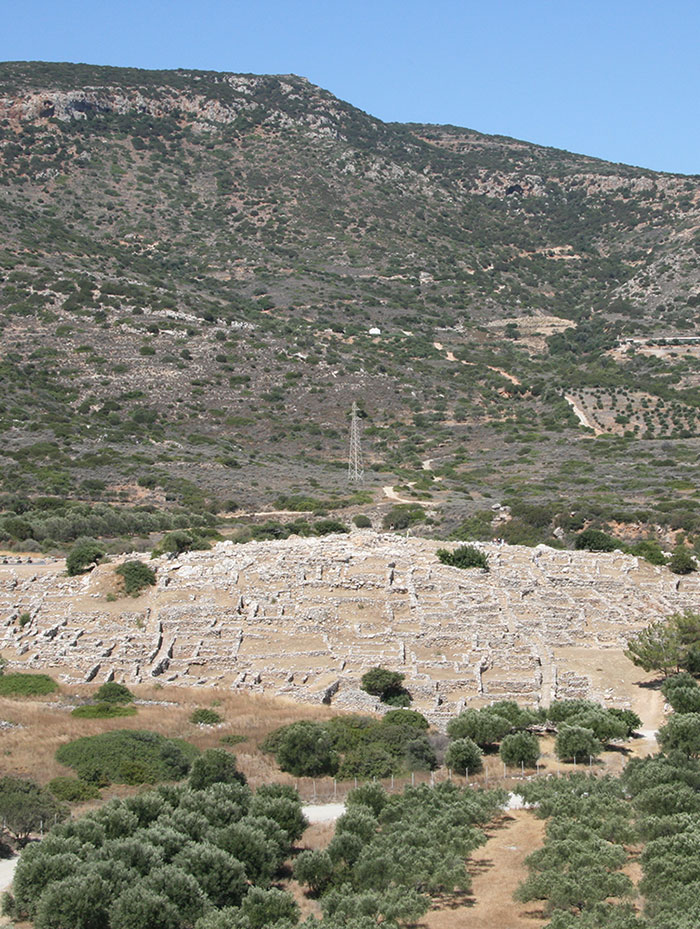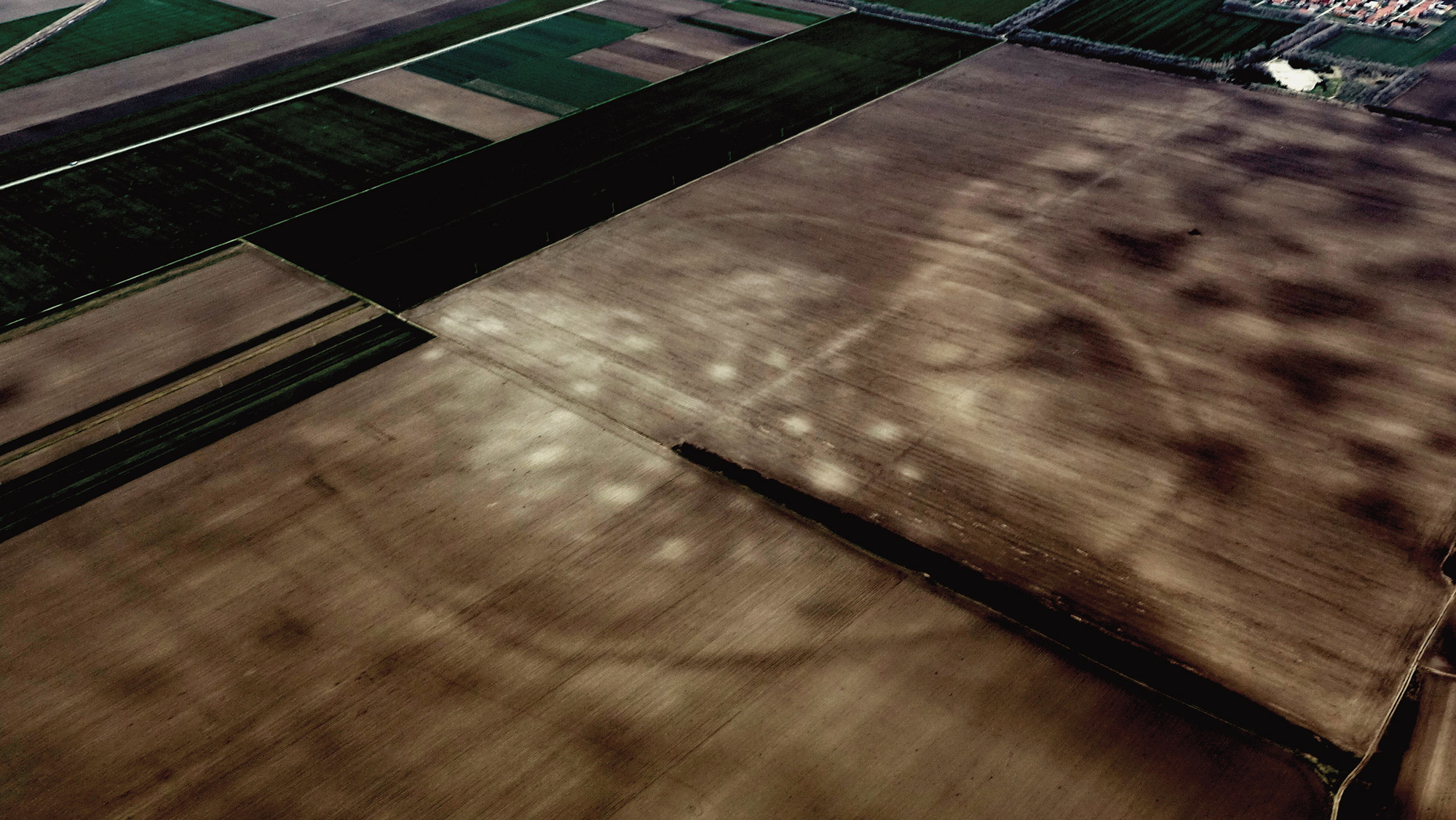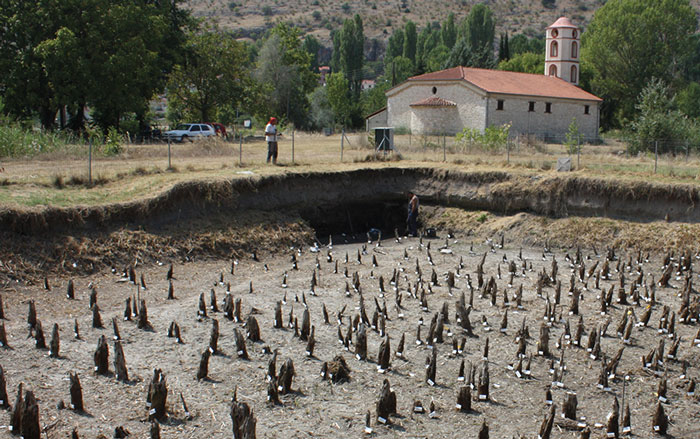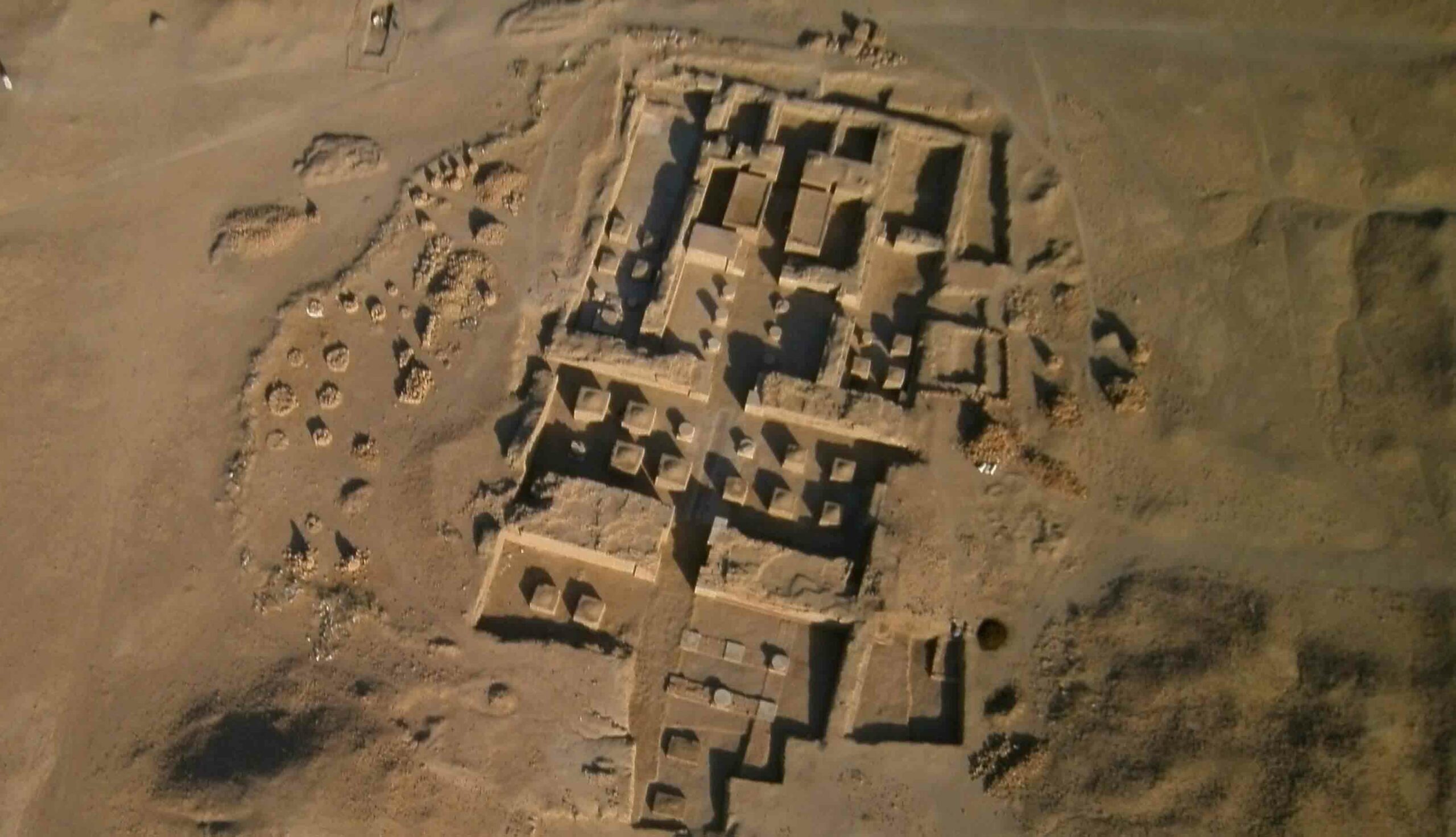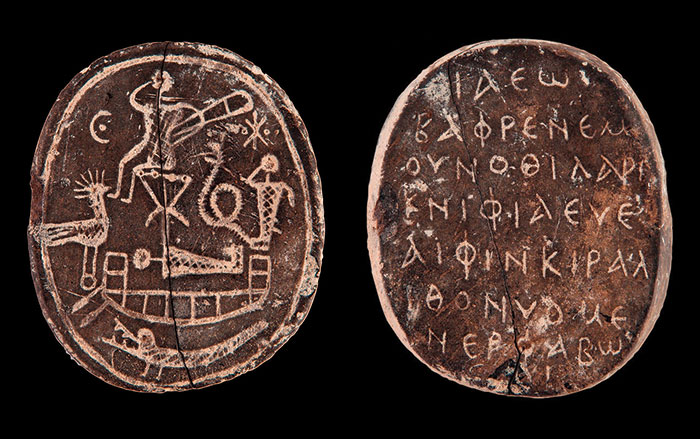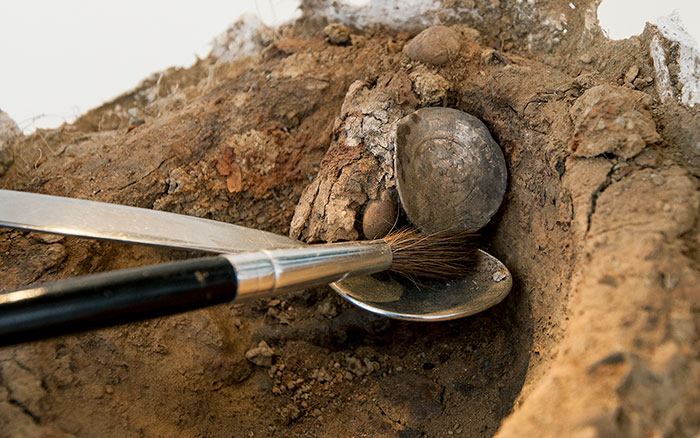I know a place where there are a lot of old things,” a peasant named George Perakis told the schoolmaster of the small village of Vasiliki, on the island of Crete, in the spring of 1901. Aware of a visiting American archaeologist’s anxious search to find a site of her own to excavate, the schoolmaster arranged for Perakis and his brother Nicholas to take Harriet Boyd and her colleague Blanche Wheeler to Gournia, four miles northwest of the village. Over several hours on May 19 Boyd collected a few potsherds and located the tops of several ancient walls, enough to convince her it was worth sending a team of workmen to the site the next morning. When she arrived at Gournia on the afternoon of the 20th, Boyd was astonished to see the men holding a bronze spear and sickle and numerous fragments of stone and pottery vessels, and clearing the threshold of a house and a well-paved road complete with a clay gutter. The following day Boyd returned with 51 workmen, and within three days, additional houses and roads had been uncovered, as well as more vases and bronze tools, making her certain that she had found what she was seeking—a Bronze Age settlement of what she called “the best period of Cretan civilization.” During three seasons ending in 1904, Boyd and her team, which averaged more than a hundred workmen along with a number of local girls whose job was to wash the finds, excavated the remains of an ancient town that had lain buried and unknown for nearly 3,500 years.
Boyd couldn’t have come to Crete at a better time. During the years that she worked there at the start of the twentieth century, a new, uniquely Cretan, Bronze Age civilization was starting to be uncovered. In 1900, British archaeologist Sir Arthur Evans had begun digging at the site of Knossos on the northeast coast of Crete and, within months, had discovered what he named the “Palace of Minos,” after the legendary king of Crete whose labyrinth was once believed to contain the half-man, half-bull creature known as the Minotaur. Evans later used the name “Minoan” to describe the civilization, a term that had first been employed by the German scholar Karl Hoeck in 1823 in his history of Crete.

Although his interpretation of Knossos as the palace of Minos, and indeed some of his characterizations of Minoan civilization, have been disputed or even disproved over the last century, Evans’ pioneering work in Crete and his recognition of Minoan culture as something distinct from the Neolithic culture that preceded it, or the various cultures, including the Mycenaeans, that followed, cannot be understated.
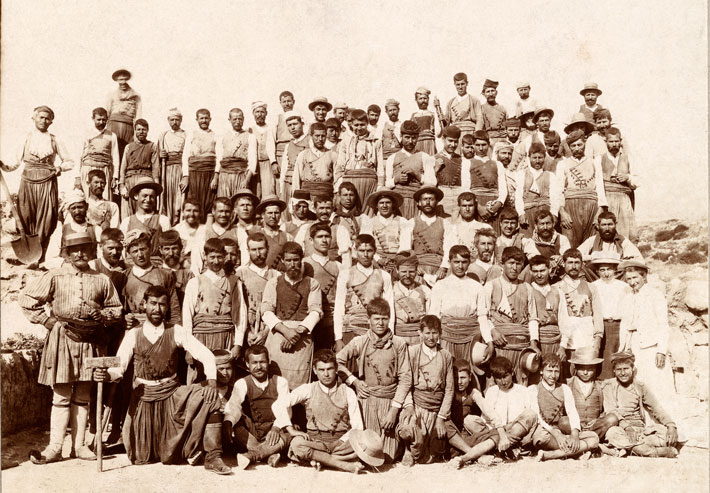
When Harriet Boyd went looking for that “best period,” then, she wanted to find Minoans. At Gournia, she discovered something of a completely different nature from Evans’ palace. Now, more than a hundred years after she began her search, a new team of archaeologists is continuing what she began, re-excavating some of the spaces she first uncovered, and digging completely new areas in order to add to the picture of a very ancient civilization that developed at the same time as the Great Pyramid and Stonehenge were built, and about which many questions remain.
Crete is the largest island in Greece and the fifth largest in the Mediterranean, spanning some 160 miles from east to west. At the center it is 37 miles north to south, while on the east, near the town of Ierapetra, not far from Gournia, the island stretches just seven and a half miles from coast to coast. The landscape varies from snow-topped mountains, the highest of which, Mount Ida, reaches more than 8,000 feet, to deep gorges and caves, expansive valleys, fertile plateaus, and sandy beaches, all surrounded by the blue waters of the Aegean Sea. Located at the crossroads of three continents, Crete has attracted visitors, travelers, and traders for thousands, and even tens of thousands, of years. The island has had an important role in the Mediterranean at many times, both ancient and modern, and has been a prized possession of major powers from the third millennium B.C. through the cultures of the Mycenaeans, Romans, Byzantines, Venetians, and Ottomans, and as an occupied territory of Hitler’s Third Reich.
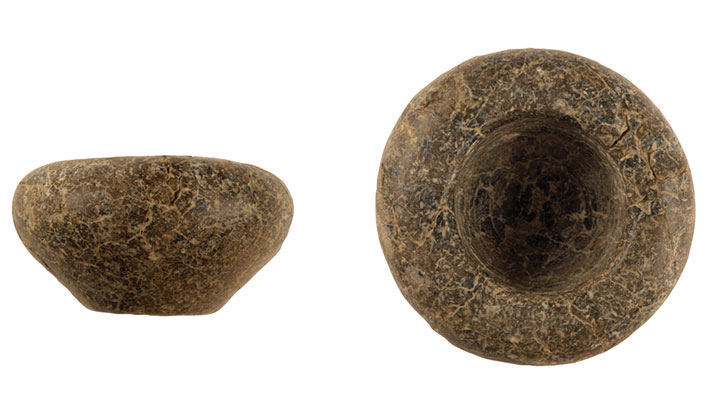
But Crete’s first great civilization was that of the Minoans. Evans suggested that the Minoans were refugees forced from northern Egypt by invaders more than 5,000 years ago. In the era in which he was working, it seemed impossible to imagine a sophisticated Bronze Age Aegean civilization that didn’t have some ties to Egypt, whose considerable antiquity, religious and political complexity, and architectural and artistic achievements had been well known for some time. In fact, Evans based his chronology of Minoan civilization on the Egyptian model of Old, Middle, and New Kingdoms, dividing its history into periods he called Early, Middle, and Late, and further subdividing it using Roman numerals and letters where more precise dates were required.
For many decades, however, most scholars have doubted Evans’ concept of Minoan origins. As to the question of when the original settlers came, likely over the course of several migratory events, “we should probably focus on the Neolithic as the first period of sustained settlement and expansion on the island,” says archaeologist and Aegean prehistorian John Cherry of Brown University. “For earlier periods, before the seventh millennium B.C., evidence of settlement tends to wink on and off, perhaps indications of seasonal occupation only, or even of local extinctions.”

A recent 10-year study led by George Stamatoyannopoulos of the University of Washington on 37 mitochondrial DNA samples extracted from bones excavated at a Late Neolithic and Minoan ossuary in the Agios Charalambos Cave in east-central Crete has suggested that the Minoans were the descendants of Neolithic farmers who had likely come from elsewhere in the Aegean. “Previous DNA samples taken from other Minoan sites, such as the Early Bronze Age tholos [beehive-shaped] tombs at Odigitria in the south, were very badly degraded, but at Agios Charalambos we were very lucky because the cave had been sealed until 1975 and the bones were fantastic,” Stamatoyannopoulos says. “We came away with good evidence that the Minoans had European [and not African or Middle Eastern] mitochondrial DNA.” Stamatoyannopoulos’ team is now working to sequence the entire genome, which, says Cherry, should help scholars better understand how homogenous or heterogeneous Crete’s ancient population was, and how it varied over time.
For the oldest era of Minoan civilization, Evans’ Early Minoan period, the evidence comes from burials and small settlements dating to between 3100 and 1900 B.C. These finds demonstrate that, early on, the Minoans were excellent sailors who were actively trading with Egypt and the Near East, exchanging their cloth, timber, foodstuffs, and, likely, olive oil, for copper, tin, gold, silver, and ivory. It’s also clear that the Minoans were developing great skill as potters, metalsmiths, engravers, and creators of the carved stone vases that would become distinctive and valuable exports for more than a millennium to come.

At the start of the second millennium B.C., a major change occurred in Minoan civilization. During the Protopalatial and Neopalatial periods, which correspond to Evans’ Middle Minoan IB through Late Minoan I periods, the Minoans built “palaces” (Evans’ name for these centers has persisted and is the basis for another system of chronology in which Minoan history is divided into Pre-, Proto-, Neo-, and Postpalatial eras) at locations mostly in the eastern part of the island including Knossos, Malia, Phaistos, and Zakros. These palaces were large stone multistoried building complexes arranged around open, paved courtyards, and contained spaces for industrial activities, food processing and storage, religious celebrations, domestic use, sporting contests, and administrative functions—more of a city core than the single domestic entity that “palace” connotes. The palaces were equipped with elaborate staircases and sophisticated drainage and plumbing, and were also decorated with brightly colored frescoes, some of the most accomplished examples of painting in ancient Greece, depicting primarily scenes from nature and daily life.
While it had been thought that the palaces supported a centralized political entity with the power to collect and redistribute taxes in the form of food, scholars are now much less sure than Evans was that this was how they actually functioned. Rather than being the locus of any sort of government with absolute control, an interpretation based on the model of the powerful urban temples of the ancient Near East, it seems more likely that they were autonomous entities used for communal rituals and ceremonies. It’s also possible that the palaces were storing large quantities of food for these events, as well as perhaps for the elite houses in the area, and paying rations to the artists and workers needed to build, decorate, and maintain each palace. Any or all of these uses would likely have led to the need to keep accurate records, which, in turn, led to the development of writing—the first in the ancient Aegean world—in the form of the script known as Linear A, as well as the use of Cretan hieroglyphics that were likely based on the Egyptian writing system. Archaeologists, beginning with Evans, have found many artifacts bearing these scripts, though both remain largely undeciphered.

In about 1700 B.C., the Minoan palaces were destroyed, probably by a massive earthquake, but were soon rebuilt and redecorated, ushering in two and a half centuries that saw the height of Minoan civilization. With well-established trade networks exchanging raw materials and luxury objects, and a relatively stable political environment, the Minoans flourished, although not as the preternaturally peaceful society pictured by Evans and his contemporaries. Most larger Minoan towns were, in fact, fortified. A second widespread destruction of the palaces in about 1450 B.C., possibly at the hands of Mycenaeans from mainland Greece, resulted in a blending of Minoan and Mycenaean cultures that eventually led to the decline of the Minoan civilization.
Thanks to Evans’ work at Knossos, as well that of the French at Malia, Italians at Phaistos, and Greeks at Zakros, a great deal was known from an early stage of research about the large palace sites of the Proto- and Neopalatial periods of Minoan history. And while Harriet Boyd may have hoped that her work would lead to similarly spectacular discoveries, at Gournia she uncovered something new and distinct—the well-preserved remains of a Minoan town. The site’s ancient name is not known, and Gournia, the name given to it by locals, comes from the Greek word gourna, a stone trough used for watering animals that can be found in any traditional Greek village. Boyd uncovered dozens of houses, cobbled streets, a small palace, a cemetery, and countless bronze tools and weapons, stone and clay vessels, and personal and religious artifacts. But she had only three seasons at the site, and the turn of the twentieth century was still early days in the development of modern archaeological methods. After marrying archaeologist Charles Henry Hawes in 1906 and publishing her fieldwork in 1908, Boyd Hawes left Gournia, and thereafter it would be only sporadically, and rather lightly, reexamined.

In 2010, when Vance Watrous of the University of Buffalo and his team began new excavations at Gournia more than a century after Boyd ended hers, there was, he believed, still a great deal to be uncovered. Some of the answers haven’t been far below the surface. “We’re really lucky here. The cultural remains start only five or six inches down,” says Watrous, adding, “No one seems to have come back here after the Late Minoan destruction, and there is very little Mycenaean evidence, and no overburden, so as soon as we start digging we’re in Minoan levels. That’s really exciting.” From the beginning, the project’s focus hasn’t been the Neopalatial site that Boyd dug. “We’re looking instead at the site’s earlier history, the Protopalatial period, and questions of what happened before the development of the palace, how Gournia came to be a regional center, and what kind of town it was during these early phases,” Watrous explains. The team is also doing a complete architectural survey led by Field Director D. Matthew Buell of Trent University and John McEnroe of Hamilton College, and creating an entirely new site map with each wall redrawn using technologies not available to Boyd a century ago. “The first year we tried to sink our trenches according to Boyd’s plan and it wasn’t working,” Watrous says. “In some cases we found rooms, and even whole buildings, that weren’t on the original plan.”
As Watrous stands at the north entrance to the site, about 125 feet above sea level, looking out at the Aegean only a third of a mile away, with the walls and streets of this very ancient town behind him, he seems like a small-town resident with out-of-town visitors, eager to show off his hometown’s best features. Not even the very loud, unrelenting cicadas’ song or the intense summer heat dampens his enthusiasm. “I’m most interested in learning how people live,” Watrous says, walking on the original Minoan street’s tidy cobbles—and you get the sense that if you follow him, you’ll know how it would have been to live in Gournia, even more than 3,000 years after the last inhabitant has left. “At places like Knossos, Phaistos, and Malia, we have huge palace urban settlements, cities really, but Gournia is something smaller, between 500 and 800 people, so it’s closer to the land, and more vivid in some ways,” Watrous says.

Of all the sites in the prehistoric Aegean, Gournia gives the best idea of what a Minoan town looked like, which Harriet Boyd understood after just three years of working there. “The chief archaeological value of Gournia,” she wrote in her site publication, “is that it has given us a remarkably clear picture of the everyday circumstances, occupations, and ideals of the Aegean folk at the height of their true prosperity.” Buell agrees: “When most people think of Minoan archaeology they think in terms of the palaces as these monolithic elements devoid of settlements, but at Gournia we have the settlement and the palace, and that’s so important.”
Between 2010 and 2014, Watrous and a yearly team of more than a hundred have added greatly to the picture of Gournia as a thriving urban center going back at least as far as the Protopalatial period (1900–1700 B.C.). On the north edge of the site, the team has found evidence of intensive industrial activity alongside domestic spaces. “There is no site comparable to Gournia anywhere nearby. These guys are not full-time farmers and this isn’t a farming village. This is the only site like this in our region,” says Watrous, who also documented hundreds of other Minoan sites, most of which he believes are farmhouses, during an extensive regional survey he conducted between 1992 and 1994. According to Watrous, a normal Minoan family home would have had four to five pithoi (large storage jars) filled with food to survive a year, but at Gournia few of the houses had pithoi at all, suggesting that inhabitants were bartering for their food in exchange for the goods they manufactured there.

In the course of both Boyd’s and Watrous’ excavations, more than 50 houses or areas with evidence of industrial activity have been uncovered—20 areas producing pottery, 15 producing stone vases, 18 producing bronze and bronze implements, and some with evidence for textile production. At one location on the north edge of the settlement, Buell points out an area of burned bedrock inside a space identified as a foundry. “Here we have all sorts of scraps of bronze crucibles, bronze drips, copper scraps, and iron used for flux. Elsewhere, we also found a tin ingot, the closest known source of which is Afghanistan, and copper ingots from Cyprus, so it’s clear they are making and working metal into objects on the site,” he says.
One of the most important areas the team has excavated is on Gournia’s northern edge, where archaeologist John Younger of the University of Kansas has uncovered a complete pottery workshop where the town’s inhabitants were making both red clay coarse wares and buff clay fine wares. In one room of the workshop there is a heap of what Younger calls “gray matter,” which, when his team sectioned it and sent it for analysis, was identified as possibly being clay from Vasiliki Ware, similar to that used to make the distinctive Gournia pottery, called Mirabello Ware, that is found at sites all over eastern and central Crete. In another room, in a phase dating to the Neopalatial period, Younger found 15 intact pots sitting upright on some benches, and in another room he found four large jars with numerous smaller pots inside. “There were pots inside pots for storage, just like I have in my cupboard at home,” Younger says, “and each one was a unique shape, so I think this was a kind of shop.” In yet another room, he found 10 cups only slightly different from one another. “I think you came here, picked out the pots you wanted. You could say, ‘I want a set of these, or ten of those,’ and then they were made and left to dry out in the yard,” Younger explains. And in the summer of 2014, in a small area east of the workshop, the team found no less than 11 kilns superimposed on each other, further evidence of the impressive duration and scale of Gournia’s industrial production.
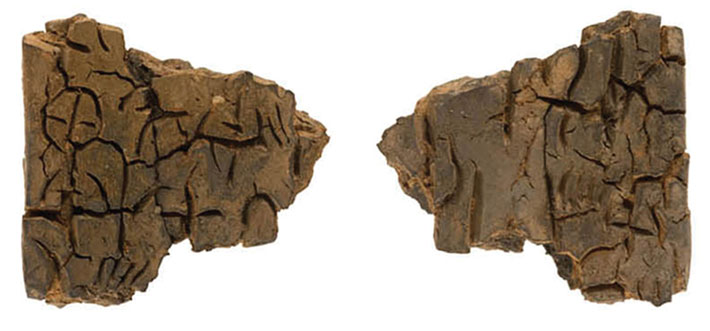
Perhaps the other most significant area the team has excavated (and in some places re-excavated) was the space that Boyd had identified as the Neopalatial palace. There they have confirmed that the palace’s walls were intended to be quite impressive. On the north facade the walls were built using the masonry technique known as Cyclopean, in which the stones are unfinished, and, consist of white boulders that may have been visible at a distance to visitors to Gournia coming from the sea. On the western side, however, facing the courtyard, the sandstone blocks are of well-finished ashlar masonry, a more refined technique, and one likely intended to impress those coming to congregate in the palace itself, explains Buell. The palace’s east wing features a large open space facing a valley, with views to a Minoan mountaintop sanctuary that, at 4,842 feet, is at the highest point in eastern Crete. “There’s a visual relationship between the palace and the peak sanctuary,” says Watrous, “and that’s really neat.”
In one room the team found more than 700 conical cups in two different deposits. The first deposit dates to the Middle Minoan III period (ca. 1700 B.C.) and includes vessels containing burned earth, animal bones, and grape seeds. “These are the remains of the celebration to mark the completion of the palace, like a foundation deposit,” says Buell, adding, “They’re like ancient Dixie cups.” The second deposit dates to the beginning of the Late Minoan IB period, in about 1600 B.C., where, in addition to the other botanical remains, the team found pomegranate seeds in the cups. The additional presence of pumice in some vessels suggests a ritual in response to the catastrophic eruption of the Thera volcano on the island of Santorini some 125 miles away. It’s clear, says Buell, that Gournia’s residents were also congregating in the central courtyard and eating and drinking, but they may have been amusing themselves in other ways too—the team also found a series of “counters,” perhaps used as gaming pieces. Within the palace, Watrous’ team made what may be their most exciting discovery: a small object that looked at first like a piece of burned bark, but that Watrous immediately recognized as a fragmentary Linear A tablet. Both Boyd and Watrous excavated many seals—clay nodules that were impressed by engraved gemstones to authenticate them—and both the tablet and the seals suggest a palatial system of administration. Boyd had also found a clay disk called a roundel bearing a short inscription in the Linear A script.
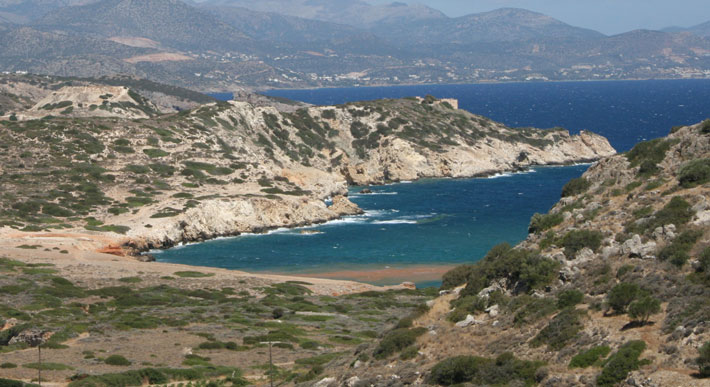
Discovering the tablet “made my whole year,” says Watrous. “It seems to follow a formulaic format that records them sending objects of some sort to various places and shows that they were fully literate. It’s not great looking, I know, but it’s really important.”
Several structures originally explored by Boyd (but about which she never published) are the Minoan buildings she located on the north coast of Mirabello Bay, about 400 yards north of the site. In 2008 and 2009, Watrous returned to this area to clean and map it, at which time he was able to identify several of them and place them in the context of the entire site. “We found a large shed for storing ships, pithoi, anchors, and tackle for unloading cargo, as well as a cobbled street running from this harbor toward the town, all of which makes sense given the scale of the industrial production here,” Watrous says. By the Neopalatial period, nearly 4,000 years ago, Gournia had a fully functioning harbor with a monumental building linked to the palace and a wharf for seagoing ships that sent goods out from the town and brought them back from overseas as part of the eastern-Mediterranean-wide trade network in which the Minoans thrived.
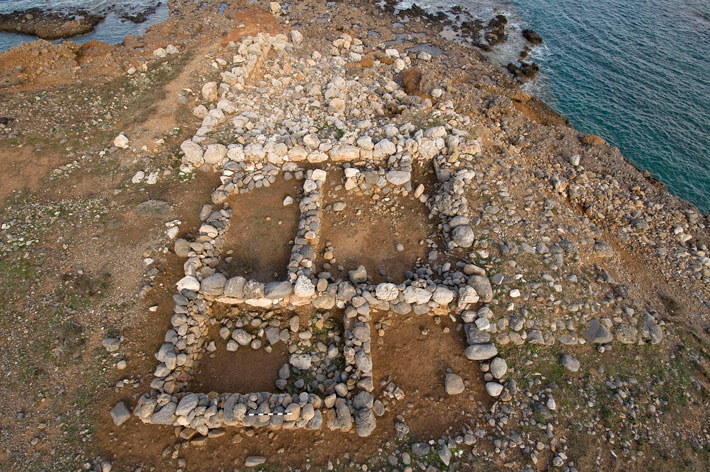
Thousands of years before Evans discovered the first evidence of the Minoans, Crete had long been known as the subject of myth and legend. Fearing the wrath of her husband Kronos, who had devoured his other children, the goddess Rhea secretly gave birth to her son Zeus, the most powerful of the Greek gods, in the Dikteon Cave in the mountains of central Crete. It was back to Crete, too, that Zeus, in the form of a white bull, took the Phoenician woman Europa, where she became queen of the island and mother to King Minos. And for the Athenians of the Golden Age, their great hero and king, Theseus, also had a Cretan past, for it was on the island that he slew the Minotaur and escaped the prison of King Minos’ labyrinth.
Yet it was not only in their myths that the ancient Greeks spoke of Crete. In the Odyssey, which is thought to reflect events of the Late Bronze Age, Homer describes Crete as a “lovely land, washed by waves on every side, densely populated and boasting 90 cities....Among their cities is the great city of Knossos, where Minos reigned.” The Greek poet Hesiod told of “Cretans from Knossos, the city of Minos…who sailed their black ship to sandy Pylos [a Bronze Age settlement on the Greek mainland],” and the fifth-century B.C. historian Thucydides wrote that Crete was the first place “to rule over the sea.” Although these writers were more than 1,500 years removed from the Minoans, nearly as far away in time as we are from the last days of the Roman Empire, Crete’s ancient inhabitants were revered and remembered as representatives of a sophisticated culture that, with its distinctive art, language, system of government, and maritime abilities, became Europe’s first great civilization.



